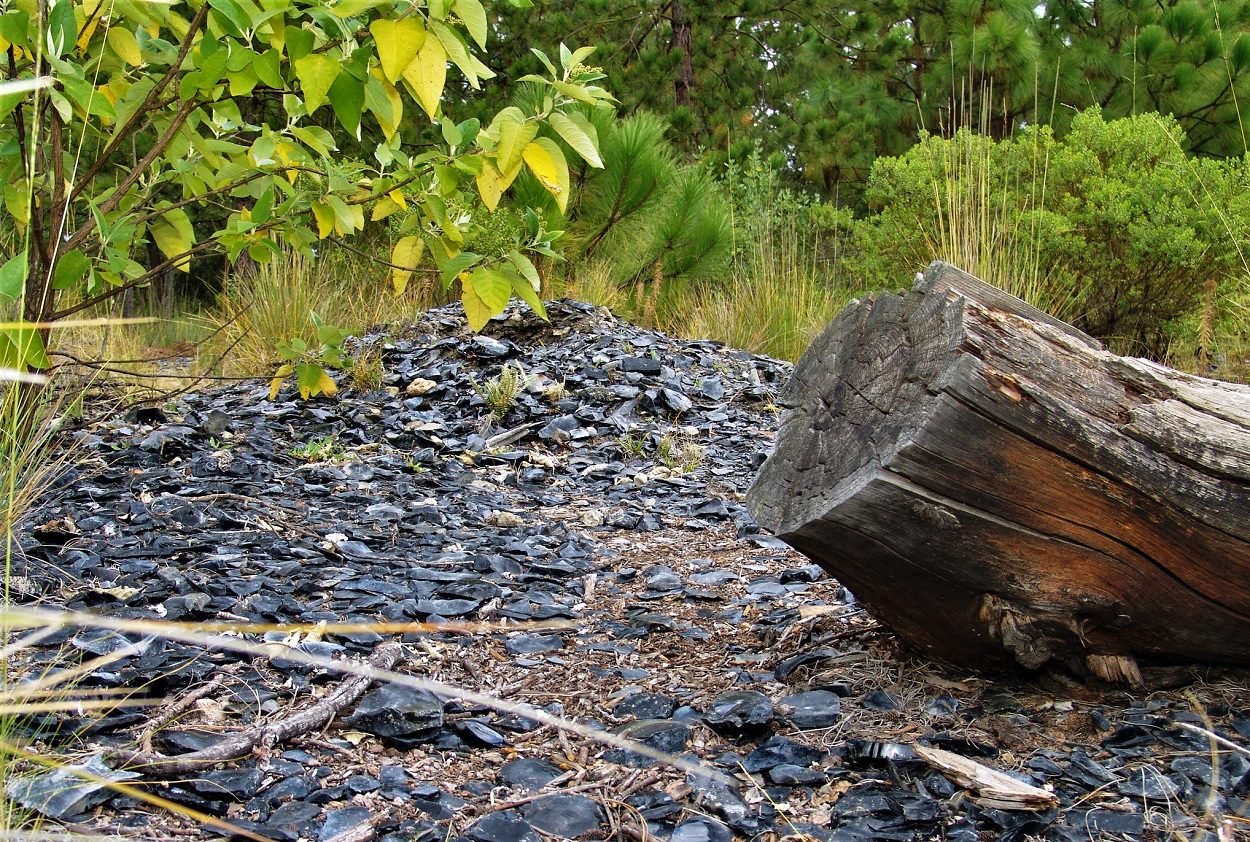For thousands of years, people living in the Sierra de las Navajas have exploited the rare deposits of obsidian, a type of volcanic glass that is formed when lava extruded from a volcano cools rapidly with minimal crystal growth.
Obsidian is produced from felsic lava, rich in the lighter elements such as silicon, oxygen, aluminium, sodium, and potassium. Due to the hard and brittle nature of the stone, it fractures to form extremely sharp edges, often used as cutting and piercing tools, instruments for worship, or for weapons manufacturing by the pre-hispanic groups living in the Americas.
The deposits are located only 31 miles from the ancient city of Teōtīhuacān, for which researchers from the National Institute of Anthropology and History (INAH) have located more than 500 mine shafts in the Sierra de las Navajas, a mountain range located in the south-southeast of the state of Hidalgo in central Mexico.
Teōtīhuacān, named by the nahuatl-speaking aztecs, and loosely translated as “birthplace of the gods” is an ancient mesoamerican city located in the Teōtīhuacān valley. During phase II from AD 100 to 350, the city population rapidly grew into a large metropolis, partly due to the economic pull and opportunities a thriving urban settlement presented, but also based on environmental factors suggested by the eruption of the Xitle volcano, forcing the migration from other settlements out of the central valley.

It was during this phase that many of the most notable monuments within Teōtīhuacān were constructed, including: the Pyramid of the Sun (the third largest ancient pyramid after the Great Pyramid of Cholula and the Great Pyramid of Giza), the Pyramid of the Moon, the Avenue of the Dead, and the Ciudadela with the Temple of the Feathered Serpent Quetzalcoatl.
Among the mines discovered, identifying shafts that date from the Teōtīhuacān era presented challenges to the researchers, as many were reused or sealed during the Toltec exploitation of the region between AD 950 to AD 1150, and then during the period of the Triple Alliance by the three Nahua city-states: Mexico-Tenochtitlan, Tetzcoco, and Tlacopan during the 16th century AD.
By conducting an analysis of mined obsidian, as well as the discovery of ceramic pieces and architecture containing obsidian pieces that coincides with the Teōtīhuacān temporality, the researchers have been able to gain new insights into the daily operation of obsidian mining during the Teōtīhuacān era which were transported and refined in workshops.
“The main production in the deposits of the sierra were the preforms, and considering that Teōtīhuacān carving is very special, to the extent that a single wrong blow can ruin the raw material, it should have been more efficient to make the preforms in the deposit and finish the spikes in Teōtīhuacān”, said Alejandro Pastrana Cruz from the Directorate of Archaeological Studies of the National Institute of Anthropology and History.
Header Image Credit : National Institute of Anthropology and History





